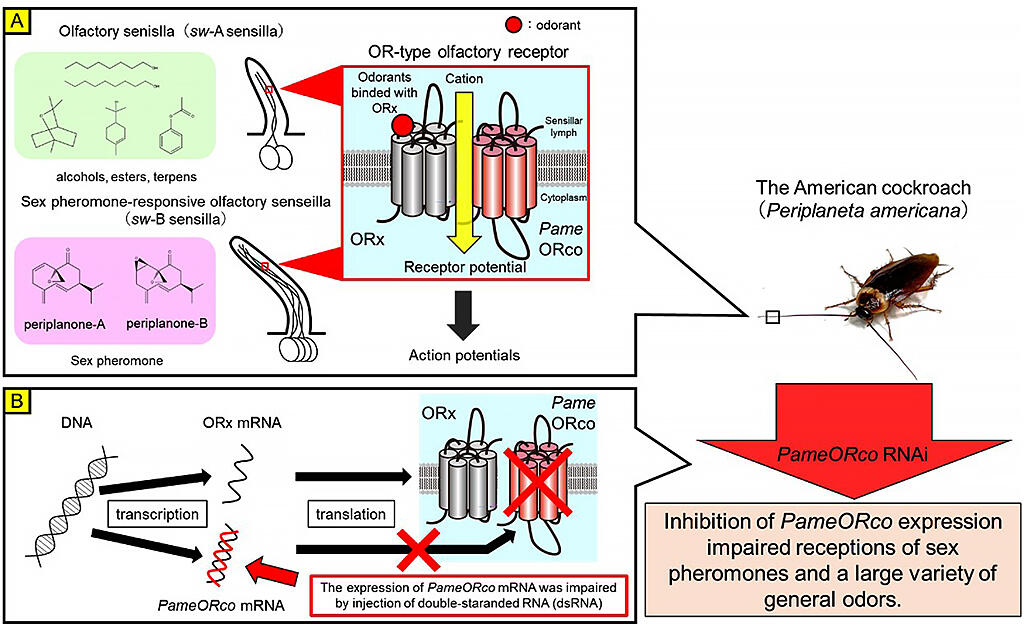The American cockroach is a widespread pest that exhibits odor-sensitive behavior, but to date, it was unknown how the cockroach took in odor molecules from the environment around it. A research group comprised of Kosuke Tateishi (Ph.D., 2021) of the Graduate School of Science, Fukuoka University, and Assistant Professor Hidehiro Watanabe of the Department of Earth System Science, Faculty of Science, Fukuoka University, and others has identified the mechanism for odor reception in the American cockroach, and successfully created a cockroach unable to smell by applying molecular biological techniques to manipulate the expression of the odor receptors, which are the core of odor reception. The findings were published in the online edition of iScience.

Provided by Assistant Professor Hidehiro Watanabe, Fukuoka University.
It is well known that animals take in odor molecules via diverse odor receptors located on olfactory sensory neurons. Insects primarily exhibit two types of these receptors, the Odorant Receptors (OR) and Ionotropic Receptors (IR). In particular, OR-type receptors bind with odor molecules from the external world through a complex of odorant receptor proteins (OR-X) and their co-receptors (ORco). OR-X proteins are found widely in insects, enabling them to bind with diverse odor molecules, but only one type of ORco protein, which binds with the OR-X proteins, is found in insects. Therefore, in theory, it should be possible to inhibit the reception of a wide variety of odors via OR type receptors by breaking this ORco protein.
A joint research team comprising Fukuoka University, Hokkaido University, and the Graduate University for Advanced Studies, led by Assistant Professor Watanabe, identified the functional odor co-receptor protein ORco in the genome of the American cockroach, clarifying the mechanism by which it senses smell for the first time in the world. Furthermore, they created a cockroach unable to perceive smells through the OR type receptors by inhibiting the expression of that gene using a technique called RNA interference.
When the group recorded the neural responses of olfactory sensory neurons in the cockroach with the expression of OR receptors inhibited, they confirmed that individuals with the expression of ORco inhibited were no longer able to sense odors such as alcohol, terpene, or ester, as well as sex pheromones necessary for reproduction. In fact, the sexual activity of the cockroach with ORco expression inhibited was greatly reduced.
This research identified the mechanism by which cockroaches smell for the first time in the world. This understanding can be used to develop more effective cockroach attractants, or to develop sensors able to mimic the cockroach's ability to smell.
While the inhibition of specific genes through RNA interference is known to be temporary, the group confirmed that when RNA interference is used to inhibit the expression of the ORco gene in American cockroaches, it is in fact permanent and irreversible. Accordingly, it may be possible to apply RNA interference to the development of pest control mechanisms in the future. It may also provide hints for developing new extermination methods specifically targeting cockroaches.
Journal Information
Publication: iScience
Title: Silencing the odorant receptor co-receptor impairs olfactory reception in a sensillum-specific manner in the cockroach
DOI: 10.1016/j.isci.2022.104272
This article has been translated by JST with permission from The Science News Ltd.(https://sci-news.co.jp/). Unauthorized reproduction of the article and photographs is prohibited.




